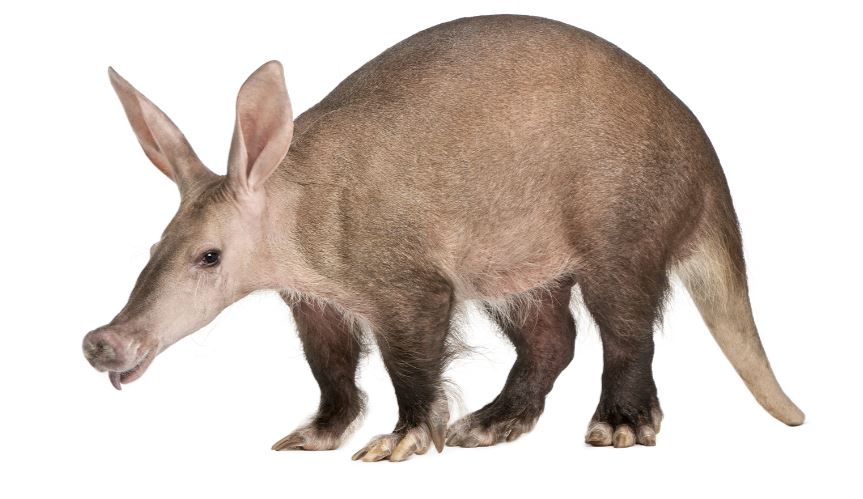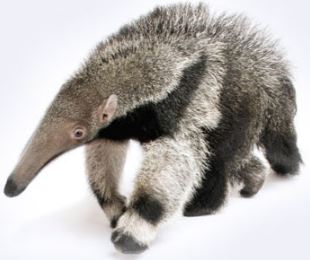Aardvark Vs. Anteater
We at Small Animal Planet are here to set the record straight on the Aardvark Vs. Anteater. They are somewhat similar but still very different in many ways. This is the first installment of what we are calling our Animals A-Z Series.

Orycteropus afer
Aardvarks are the only living member of the order Tubulidentata. Due to their elusive lifestyle, they are also one of the least known of all mammals.
Subspecies
There is debate over whether or not any subspecies exist. Due to insufficient knowledge, it is impossible to reach frim conclusions.
Life span
In captivity, they live for up to 10 years.
Statistics
Head-body length: 105-130cm, tail length: 45-63cm, weight: 40-65kg.
Physical Description
Aardvarks have a distinctive curved back, a pig-like body, a long snout, large ears, powerful limbs and shovel-shaped claws for digging. They have bristly, sparse fur tinged with yellow and white. Females tend to be paler than males.
Distribution
They inhabit Africa, south of the Sahara.
Habitat
Aardvarks mainly live in woodland, scrub and grassland. They are sometimes found in rainforest, and are absent from desert regions.
Diet
Aardvarks feed on ants and termites, and can consume about 50,000 insects in a night! Ants are the preferred prey, but when they become less abundant in the winter, termites are the next best thing. Using their strong front limbs, they break into the insects' nests. They can fold their ears back and they have a profusion of nasal hairs to keep out the dust while they're digging. Although they have poor eyesight, they have acute hearing, and a good sense of smell - which helps them to locate their prey. Most species of ants and termites are lapped up by the tongue and swallowed whole, but one species of ant is chewed up first. They lack incisor and canine teeth.
Behavior
Aardvarks are nocturnal and solitary. They excavate burrows up to 10m long around their home range of 2-5 square km. Three types of burrow are created: those dug when looking for food; temporary sites scatterered around the home range and used for refuge; and permanent burrows used by females for giving birth. Only mothers and their young share burrows.
Reproduction
They give birth to a single young after a gestation period of 7 months. The young weigh about 2kg at birth. It ventures out of the burrow at about 2 weeks of age but will stay with its mother for at least 6 months.
Conservation status
Aardvarks are not considered to be threatened.

Myrmecophaga tridactyla
The largest anteater, and one of the strangest-looking animals on Earth, the giant anteater is an ant and termite specialist with an amazingly long tongue and powerful claws.
Life span
Up to 26 years in captivity.
Statistics
1-1.3m long, with a 65-90cm tail. Giant anteaters weigh 22-40kg with males being about 20 per cent heavier than females.
Physical Description
Giant anteaters are one of the strangest-looking animals. They have a very long, narrow head (to house their long sticky tongue), very long claws on short, stout legs, and a long bushy tail. They are covered with coarse hair which is long and shaggy on the underside and tail. Their coat is mostly grey with bold black and cream markings. Their long claws means that they have to walk on the sides of their feet with their claws curled up.
Distribution
Central America, South America east of the Andes as far south as Uruguay and North West Argentina.
Habitat
Tropical forests, open woodland and dry savannah.
Diet
Ants and termites.
Behavior
Mainly solitary, the giant anteater roams a home range large enough to contain enough ant and termite nests to feed it. They rest in a scooped-out hollow for up to 15 hours per day, covering themselves with their tail. Their vision is quite poor, and they mainly use scent to find their prey. They dig a small hole in the ant or termite nest and use an extraordinary set of tongue and jaw movements to lick up the workers as they are exposed. They can stick their very long and very sticky tongue out as many as 150 times a minute. They are choosy about their prey, though, and carefully avoid the aggressive soldier ants.
Reproduction
Giant anteaters mate in the autumn and give birth the following spring after a gestation of 190 days. The female gives birth standing up, using her tail as an extra support. Usually there is only one offspring, although twins are known. The young crawl onto the mother's back and are carried for up to a year. They are weaned at 6 months, and can gallop after only one month, but they remain with the mother for up to two years, when they become sexually mature.
Conservation status
They are listed as Vulnerable, because of hunting for trophies or by animal dealers, and habitat destruction.
Voice
Giant anteaters can bellow if alarmed but are otherwise usually silent.
Records
Giant anteaters have the lowest metabolic rate of any placental mammal, being recorded at 32.7 degrees Centigrade. Marsupials and monotremes can have lower body temperatures than this.
There you have it. The Aardvark Vs. Anteater. Which animal is your favorite?
I’ve always wondered what the difference between an aardvark and anteater was! I thought they were more similar than that though. Nice post!
Crazy Animals!
This is a great killing time website, especially if you love animals!
Yes, but which one makes the best pet? 🙂
Love the comparison
I’m team aardvark!